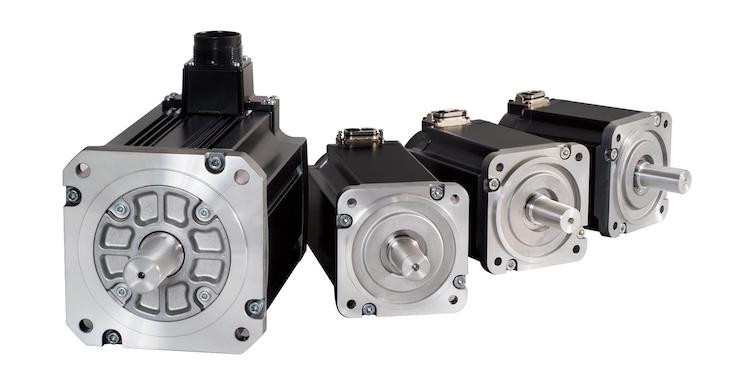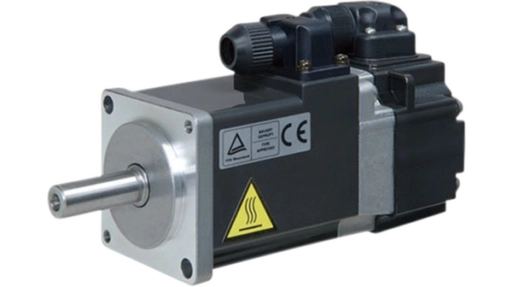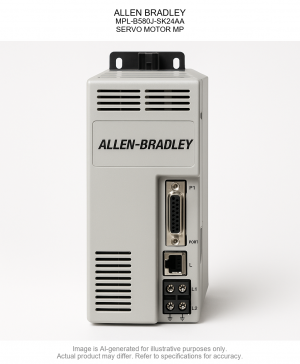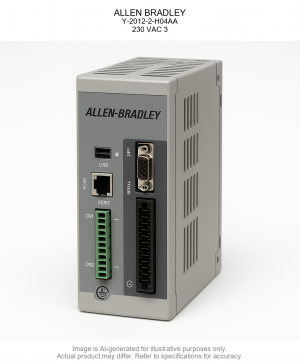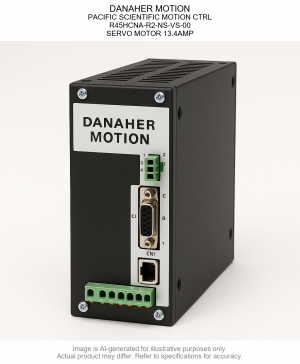Explore high-precision servo motors and drives for industrial automation. From brushless designs to low-inertia systems, find solutions for robotics, CNC, and motion control. Understanding Servo…
Explore high-precision servo motors and drives for industrial automation. From brushless designs to low-inertia systems, find solutions for robotics, CNC, and motion control.
Understanding Servo Motors
What Is a Servo Motor?
A servo motor is a high-precision actuator that converts electrical energy into controlled mechanical motion. These motors use closed loop control with encoders or feedback devices to maintain accuracy in position mode, speed mode, or torque mode. Built with permanent magnet technology, servo motors deliver high torque density and precise movement across a wide power range, making them ideal for industrial applications such as robotics, machine control, and motion systems.
Key Components and Functionality
A complete servo system includes a servo drive, controller, and motor integrated into a motion solution. The servo drive interprets command signals from PLCs or automation platforms, adjusting current and voltage for accurate position feedback. Depending on application needs, systems may use AC induction motors, brushless servo motors, or DC servo motor control systems.
Servo drives often support EtherNet/IP network, Modbus TCP/IP, or RS485 bus communication protocols, providing flexibility for system integrators and end users across different industries.
Types of Servo Motors and Drives
AC and DC Servo Motors
AC servo motors dominate modern motion control due to efficiency, reliability, and reduced maintenance. Brushless AC servo motors, such as the 750W ELDM Brushless AC Servo Motor, offer continuous torque, low inertia, and smoother acceleration. DC servo motors remain suitable for compact or mobile applications, offering fast response and simpler wiring.
Brushless and Permanent Magnet Designs
Brushless motors rely on permanent magnet rotors, often made from sintered Neodymium-Iron-Boron, to reduce detent torque and energy loss. These brushless high torque motors feature optimized thermal design and finite element analysis for performance in demanding environments. Using water cooling or tailored cooling systems, they achieve better energy consumption control and continuous-duty application ratings.
Advanced Servo Drives and Motion Controllers
Modern digital servo drives like the Kinetix 5100, Kinetix Servo Motors, and MP Series Servo Motors use single cable technology and multi-axis high-speed bus synchronous control to simplify setup. Compatibility with BACnet MS/TP, CANopen bus, and Modbus TCP/IP ensures seamless integration into I/O & Motion Controller networks. The VP Series Servo Motors are favoured by system integrators for variable frequency drives and multi-purpose servo motor solutions.
Technical Performance and Key Parameters
Torque, Speed, and Inertia
The rated speed, peak torque, and continuous torque of a servo motor determine its suitability for different loads. Low inertia motors provide fast acceleration—critical for robotic arms and rotary actuators—while high torque units support heavy industrial demands. Nominal speeds and positioning accuracy are maintained via encoder solutions and optimized encoder disks.
Power and Communication Capabilities
Servo drives span a wide power range, from small frame sizes (e.g. NEMA 23/34/56/143) up to high-power industrial systems. Integration via EtherNet/IP, RS485, or advanced driver networking supports flexible machine control. Distributors like Ocean Controls and the Australian Compliance Laboratory help ensure servo products meet local standards.
Specialized Motor Technologies
Recent improvements such as IPM rotor design, Hyperface DSL® encoders, and IP53 / IP67 / 66K protection ratings extend motor longevity in harsh conditions. External permanent magnet alignment, refined magnet shape, and optimized iron for motor housings improve thermal design and mechanical robustness.
Applications and Industrial Use Cases
Robotics, CNC, and Automation
Servo motors power robotic arms, AGV control systems, motion systems, and CNC equipment. Their closed loop control ensures precision in continuous-duty applications, while brushless servo drives and AC induction motors support accelerated cycle times. System integrators and end users rely on these motion solutions to enhance equipment uptime and reduce energy consumption.
Smart Motion and Digital Twin Technology
Incorporating digital twin models enables performance evaluation of motion systems before physical deployment. With software & firmware monitoring and self-guided motor selection tools, engineers can simulate servo motor behavior under varying loads. Platforms like the Davis Instruments Gateway and Labjack Pro 7 assist in collecting real-time feedback for predictive maintenance.
Industry 4.0 and Future Trends
As automation evolves under Industry 4.0, servo motors equipped with pulse-type synchronization, scalable servo motors, and advanced communication protocols are central to smarter factories. Modern automation platforms embed I/O & Motion Controllers that coordinate multi-axis motion—reducing downtime and improving adaptability. Innovations in cooling systems, energy recovery, and thermal design further drive efficiency and sustainability.
Selecting the Right Servo Motor
Matching Application Needs
Selecting the right servo motor and drive requires assessing rated speed, peak torque, power range, and supported communication protocols. Options like Kinetix® TL-Series™ and 60 Series provide scalable servo products suitable for both light and heavy automation tasks. When integrated with machine control systems and variable frequency drives, they deliver flexible motion solutions across diverse industrial settings.
Tools, Support, and Maintenance
To streamline selection, manufacturers provide product manuals, support articles, and self-guided motor selection tools. Routine inspections (connectors, cooling, encoders) maintain system health. For advanced assistance, call us or contact certified system integrators for servo drive configuration, tuning, and performance evaluation.
The Future of Servo Drive and Motor Technology
Intelligent Connectivity and Automation Platforms
Next-gen Kinetix Servo Drives and brushless servo motor systems interface with EtherNet/IP network and BACnet MS/TP for real-time diagnostics. These motion systems enable efficient multi-axis control and reduced energy consumption. The advent of digital servo drives with single cable technology streamlines installation and driver networking in both industrial and lab-scale setups.
Design and Manufacturing Innovations
New IPM rotor designs, improved encoder disks, and refined finite element analysis are redefining servo efficiency. Solutions like water cooling, advanced thermal design, and SpedTec® closure maintain performance under continuous-duty applications. These advancements boost reliability and minimize downtime.
Sustainable Motion Systems
Modern motion systems combine variable frequency drives, brushless high torque motors, and permanent magnet technology to optimize power efficiency. With communication standards like CANopen bus and EtherNet/IP, these systems support adaptive machine control with lower energy usage and improved environmental performance.
Broader Integration with Safety and Automation Systems
In advanced industrial automation, servo motors form a crucial link between motion systems and machine safety architectures. These motors work in coordination with safety PLCs (such as the Pizzato CS MP series) to ensure high-speed machinery operates safely. Paired with safety encoders and servo drives / servo amplifiers, they deliver real-time feedback supporting closed-loop control, Safe Torque Off (STO), and fast shutdown in fault conditions.
Peripheral devices like emergency stop relays and two-hand stations and rope pull switches are managed through the safety PLC’s logic to ensure safe operation. Additional safety elements such as RFID safety switches, mechanical interlock switches, and solenoid locking switches help protect personnel and machinery in servo-driven systems.
To sustain reliability, servo systems often include speed monitoring relays / standstill monitors and current monitoring relays to detect abnormal loads or faults. Measurement light curtains further enhance process precision in synchronized motion control environments.
For robust power management, devices like voltage monitoring relays, battery monitors, and phase sequence relays safeguard servo drives and other components. All data can be displayed on HMI touch panels or within advanced automation platforms, giving operators insights into efficiency, power relays, and regulated power supplies to uphold uptime and accurate motion across the full servo motor system.

